

Day after day, luxury brands are diving deeper into the technology world. Recently, it has become more common for fashion, vehicles, and jewellery brands to add digital experiences to strengthen the interactions between their clients and technology and create brand loyalty. This blog will explain why and how they do it and their reward after digital transformation.
Let’s start… What is a luxury brand?
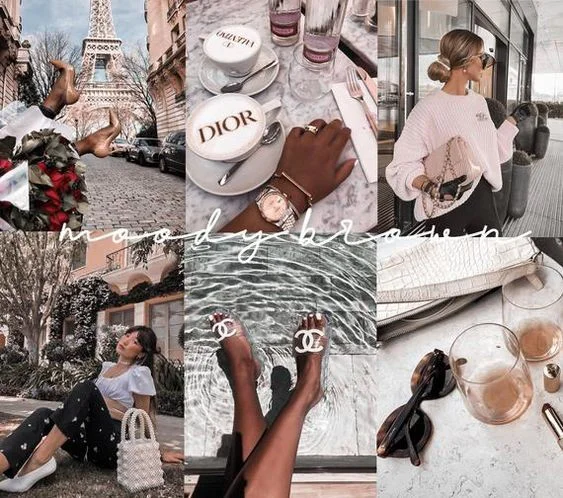
Influencer´s collage with luxury brands articles – Pinterest
First, it is essential to define what’s a luxury brand. Luxury brands aim to reach two central values the first one is exclusivity and the second one is identity.
-The exclusivity gives status to the brand. The idea is that not all people can get brand articles because their price is higher than the price of supplementary products in the market. In that way, the clients who buy a luxury object feel that they have a higher social status than those who don’t; in other words, they feel that the brand adds value to themselves.
-The exclusivity is also represented in the few productions of the same item. Generally, luxury brands don’t produce massively, and they create strategies to launch few copies, creating an effect of high demand and low offer. That way, the consumer that gets a product feels unique.
-Luxury brands don’t compete with similar brands in the market; they have a reflective and introspective job in which they improve themselves to be more recognised and keep their Luxury brand label. The identity of these brands is so recognised that just because of their logo, brands charge even 100 times more for the same item.
Luxury brands and technology
Day after day, with humans’ constant interaction with technology, new advances have emerged, and new ways of selling and promoting brands have appeared. We have migrated from catalogues to e-commerce and from websites to purchases on social networks.
That’s why the most prestigious brands adapt to these new dynamics and to the latest and future generations of consumers, who live very differently from their grandparents. In the following paragraphs, I will list some of the main reasons brands use technology more and more every day.
Connect with new customers
One of the main reasons is to connect with a new audience. Luxury brands have begun to launch strategies to captivate Millennials who quickly adapted to connectivity and entertainment on demand and to captivate the next generation called Generation Z (under 25 y.o), who have taken technology for granted since birth. In the end, brands know that they are not the generation with the most significant purchasing power at present, but they are the ones that have the most influence in the digital market.

Gucci glasses in influencer account picture
A good example is LOUIS VUITTON. The brand has started a collaboration with BTS, one of the biggest boy bands of the moment, to reach the band’s young fans, and launched a new collection through a futuristic video on YouTube, one of the most visited platforms, with the members of the musical group modelling. In a few hours, the video reached two million visits, a chipper they wouldn’t achieve in the same period with catalogues or photographs.
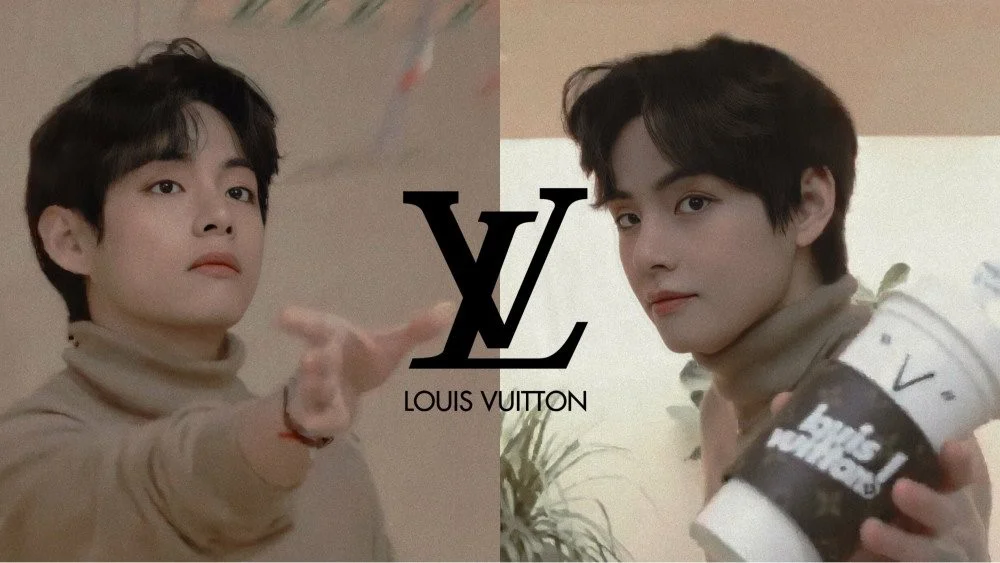
BTS wore Louis Vuitton and displayed his immaculate fashion sense
Improve customer experience
Another reason why luxury brands are implementing technology is the consumer experience. The help of apps and QR code scans allows visitors to have the best possible experience in their stores by mixing reality with digital interaction.
BURBERRY, for example, has been a pioneering brand in technology implementation. Altagamma and the Italian National Fashion Chamber recognised the British brand for its Exceptional Digital Deals throughout 2020 *. The brand has been recognised for its expansion in digital stores and social networks (they were one of the first Instagram partners to test the shopping functionality). The English brand is also known for its immersion in video games and shopping tools, improving and facilitating customer experience.

Burberry designs skins for Honor of Kings characters
Regarding the consumer experience, BURBERRY has established augmented reality in its app. The app allows consumers to see how the garments they sell would look in a person’s daily environment and enable customers to pay for them immediately through the app without lines or delays.
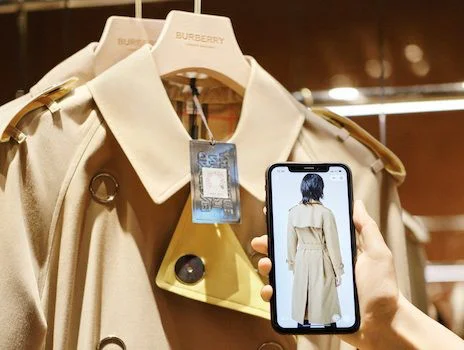
Burberry AR experience
Additionally, at the launch of the Olympia bag, the brand decided to bring to life the Greek goddess who gave the piece its name. By scanning a QR code, consumers could observe the statue in 3D and capture images of it, creating a luxurious experience that is not common, at least at the moment, in other stores.
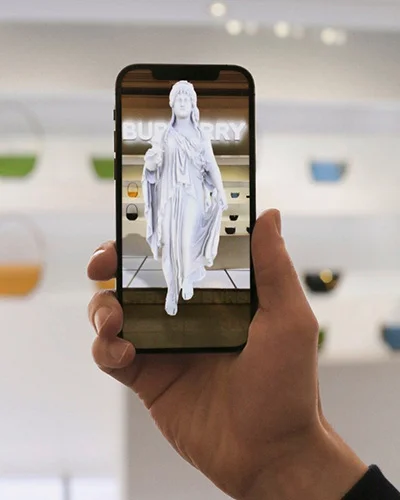
Burberry invites customers into the world of Olympia with its latest augmented reality experience
Being sustainable and green
Luxury brands are renewing themselves to act against the current environmental problems and to provide solutions that align with the new generations’ ideals. That way, they retain consumers and have a clear and strong voice in the market. Moreover, with the help of technology, they are improving processes and materials.
An example of green renewal is CHANEL. The brand invested in a green chemistry startup that is experimenting with liquid silk to produce high-quality textiles, avoiding the use of toxic and environmentally harmful products, as well as the use of animal skins. This way, CHANEL explores innovative materials and mechanical and optical improvements in different fabrics of unique quality.
Another example is Stella McCartney, who works with other designers and Google to use Data Analytics and Machine learning on Google Cloud. The aim is to give other brands a better understanding of the supply chain to measure their environmental impact and reduce it.
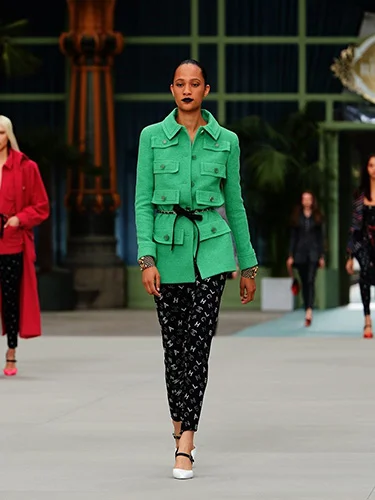
Chanel cruise collection Winter 2020
What are they getting in Exchange?
According to a Forbes study, Generation Z in 2018 was only responsible for 4% of luxury sales worldwide; however, by 2020, luxury sales in this market niche increased to 10%. Furthermore, in regions like China, they grew to 15%. Apparently, it was an effect of the adoption of emerging technologies, digital marketing tools to create content (such as augmented reality, virtual reality, and Artificial Intelligence chatbots), and the adoption of collaborations to create digital versions of their products or collections (See the virtual Gucci sneakers that cost $ 12).
In summary, luxury brands are expanding more and more to get new consumers loyal to them. Those brands improve the shopping experience either online or in-person with the help of technology. They are greener and more sustainable, which has led them to increase sales in the new generations and has led them to implement new, more robust, and updated strategies that target the digital and collaborative market.
REFERENCES
https://www.forbes.com/sites/josephdeacetis/2020/10/04/how-technology-is-helping-luxury-fashion-brands-to-gain-traction/?sh=1630aa793640
https://ww.fashionnetwork.com/news/Chanel-invests-in-green-chemistry-startup,1108103.html
https://www.burberryplc.com/en/news/brand/2021/burberry-invites-customers-into-the-world-of-olympia-with-its-la.html

Carla Acosta – Visual Designer

VISIT OUR KNOWLEDGE CENTER
We believe in democratized knowledge
Understanding for everyone: Infographics, blogs, and articles
Let’s tackle your business difficulties with technology
” There’s a big difference between impossible and hard to imagine. The first is about it; the second is about you “

Marvin Minsky, Professor pioneer in Artificial Intelligence